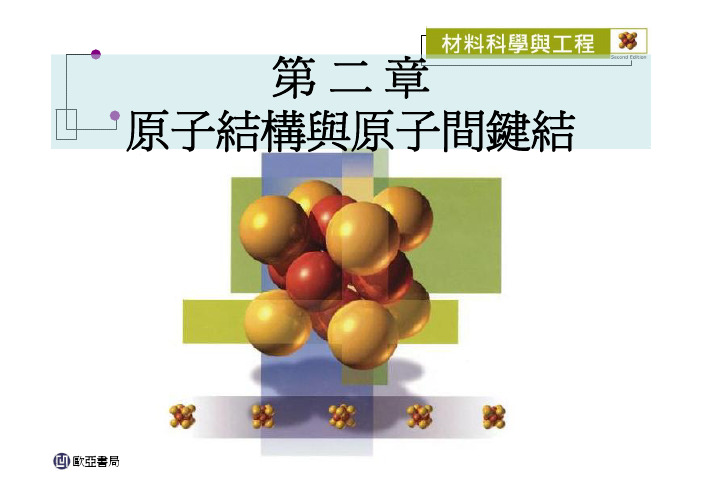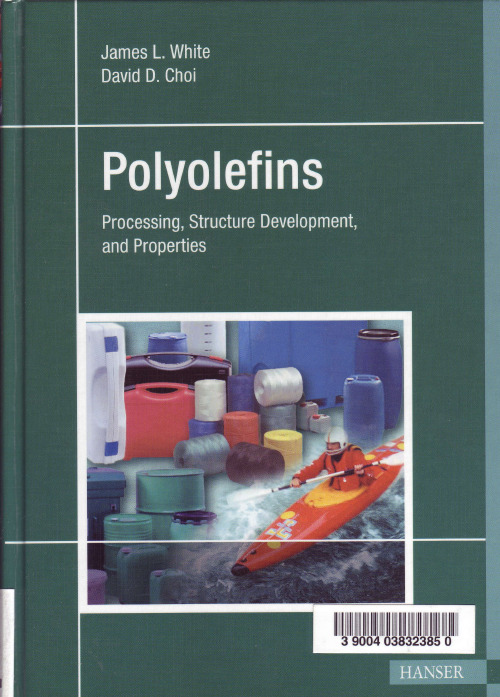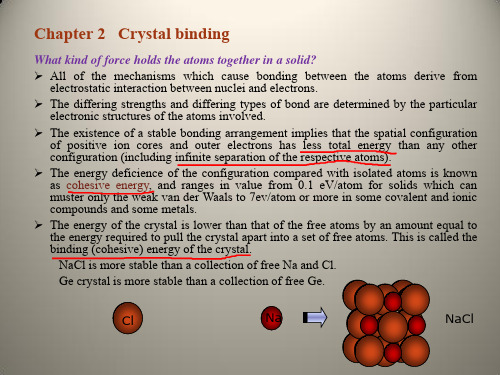Chapter 2. Poly(internal olefins)
- 格式:pdf
- 大小:1.07 MB
- 文档页数:10

润滑油的调配润滑油是由基础油(80-90%)及添加剂(10-20%)组合而成的。
即润滑油=基础油+添加剂基础油可以是矿物油、半合成或100%合成油。
所以矿物油=矿物基础油+添加剂;合成油=合成基础油+添加剂,两者不同之处只是基础油。
简单的说,制造矿物基础油的过程是“提炼”:也就是说把不要的杂质去除掉;而制造合成基础油的过程则是“合成”:就是把所需要的成分拿来组合。
1.矿物基础油: 原油在大气压力下经过蒸馏之后,可按沸点不同而分为石脑油(Naphtha)、挥发油、煤油、柴油以及残留于塔底之蒸馏余油Residual oil或Toped crude)。
而蒸余油经过a.真空蒸馏.b脱腊.c脱沥青.d溶剂萃取精炼.e白土处理.f加氢精炼后,即成个各种不同品质及黏度之基础油(Base oil)。
2.合成基础油: 第二次世界大战时,德国缺乏石油原料,首先采用二盐基酸酯类作为润滑剂,此为合成润滑剂之先声,合成润滑剂具有特定的分子结构,性能较矿物基润滑剂优异。
常用形式的合成基础油则包括以下三种:2.1 聚α烯(Poly-alpha Olefins) 是烯类化合物聚合反应所得,复级且流动点非常低,也被称为合成碳氢化合物。
通常与有机酯(Ester)混合掺配制造。
2.2 加氢裂化非传统的基础油(Hydrocracked/Hydrolsomcerized Unconventional base oil UCBO’s)加氢是矿物油在极高温下经一次、两次或三次额外精练而得。
2.3 有机酯(Organic ester) 当产品需要去抵抗较大的温度的差异时则应选择合成基础油成份用油,具有一较高黏度指数或非常长的寿命。
这高黏度指数允许使用黏度指数改良剂以抑制避免剪力稳定性退化随着时间。
基础油特性对照表---------------------------------------------------------基础油矿物油加氢处理油聚α烯油有机酯油黏度指数 100 120~150 120~150 130~160流动点 -10/-15℃ -15/-25℃ -40/-60℃ -40/-60℃黏度温度特性一般一般~良优优耐高温性一般良一般~良良低温流动性一般良优优氧化安定性一般良良良润滑性优优优优耐放射性差~一般差差差耐火性差差差差---------------------------------------------------------3.添加剂(Additives) : 润滑油脂中加入少许特殊物质之后足以改善其特性,提高其特殊功能者,此物质谓之“润滑油脂用添加剂”(Additives for sudricating Oils Grease),简称“添加剂”,此种添加剂多为特殊之化学制品(Chemicals)。

A 高分子化学和高分子物理UNIT 1 What are Polymer?第一单元什么是高聚物?What are polymers? For one thing, they are complex and giant molecules and are different from low molecular weight compounds like, say, common salt. To contrast the difference, the molecular weight of common salt is only 58.5, while that of a polymer can be as high as several hundred thousand, even more than thousand thousands. These big molecules or ‘macro-molecules’ are made up of much smaller molecules, can be of one or more chemical compounds. To illustrate, imagine that a set of rings has the same size and is made of the same material. When these things are interlinked, the chain formed can be considered as representing a polymer from molecules of the same compound. Alternatively, individual rings could be of different sizes and materials, and interlinked to represent a polymer from molecules of different compounds.什么是高聚物?首先,他们是合成物和大分子,而且不同于低分子化合物,譬如说普通的盐。

第二章原子結構與原子間鍵結這張是用先進的原子力顯微鏡(AFM)針對金試片表面拍攝所得之顯微照片。
在(111)的結晶格子面中可清楚顯示出個別的金原子。
同時,尺寸刻度標示於照片的下方(可至奈米的範圍)(Dr. Michael Green, TopoMetrix Corporation 授權採用)。
2.2 基本觀念(2.1 )(a)波爾氫原子中最初的三個電子能階態。
(b)波動力學氫原子中最初三層的電子能階態以電子分布來比較(a)波爾及(b)波動力學原子模型圖2.4在不同的主層及副層中相對的電子能階模型示意圖電子組態圖2.5鈉原子填滿能態示意圖2.4 週期表•圖2.6 元素週期表2.5 鍵結力與鍵結能圖2.82.6 原子間的主要鍵結離子鍵(Ionic Bonding)圖2.9氯化鈉(NaCl)中之離子鍵結示意圖共價鍵圖2.10甲烷(CH4)分子中共價鍵的示意圖金屬鍵圖2.11金屬鍵的概略示意圖2.7 次要鍵結或凡得瓦爾鍵變動感應偶極鍵(Fluctuating Induced Dipole Bonds)圖2.12兩偶極間凡得瓦爾鍵示意圖圖2.13(a)電性對稱之原子(b)感應原子偶極偶極分子-感應偶極鍵圖2.14偶極氯化氫(HCI)分子的示意圖永久偶極鍵圖2.15氟化氫(HF)中氫鍵的示意圖。


润滑油(机油)基础知识全普及,全面翔实,一起学习吧:)一、首先开始从基础油的分类说起:I类基础油通常是由传统的“老三套”工艺生产制得,从生产工艺来看,I类基础油的生产过程基本以物理过程为主,不改变烃类结构,生产的基础油质量取决于原料中理想组分的含量和性质。
因此,该类基础油在性能上受到限制。
II类基础油是通过组合工艺(溶剂工艺和加氢工艺结合)制得,工艺主要以化学过程为主,不受原料限制,可以改变原来的烃类结构。
因而II类基础油杂质少(芳烃含量小于10%),饱和烃含量高,热安定性和抗氧性好,低温和烟炱分散性能均优于I类基础油。
III类基础油是用全加氢工艺制得,与II类基础油相比,属高黏度指数的加氢基础油,又称作非常规基础油(UCBO)。
III类基础油在性能上远远超过I类基础油和II类基础油,尤其是具有很高的黏度指数和很低的挥发性。
某些III类油的性能可与聚α-烯烃(PAO)相媲美,其价格却比合成油便宜得多。
IV类基础油指的是聚α-烯烃(PAO)合成油。
常用的生产方法有石蜡分解法和乙烯聚合法。
PAO依聚合度不同可分为低聚合度、中聚合度、高聚合度,分别用来调制不同的油品。
这类基础油与矿物油相比,无S、P和金属,由于不含蜡,所以倾点极低,通常在-40℃以下,黏度指数一般超过140。
但PAO边界润滑性差。
另外,由于它本身的极性小,溶解极性添加剂的能力差,且对橡胶密封有一定的收缩性,但这些问题都可通过添加一定量的酯类得以克服。
除I~IV类基础油之外的其他合成油(合成烃类、酯类、硅油等)、植物油、再生基础油等统称V类基础油。
按照传统的分类方法,I、II、III类基础油属于矿物油,IV、V类基础油属于合成油,但是在上面关于III类基础油的介绍中提及“某些III类油的性能可与聚α-烯烃(PAO)相媲美”,而壳牌所采用的XHVI基础油(XHVI是壳牌专利技术的合成型基础油)就是这些III类油的代表,XHVI基础油其性能(如粘温特性和抗氧化性等)较PAO和酯类有较大差距,也就是说在抗高温性上灰壳肯定不如以PAO为代表的美孚一号和以酯类为代表的法国MOTUL全合成润滑油。

aps化工原料-概述说明以及解释1.引言1.1 概述概述:APS化工原料是指应用颗粒售前螺旋输送机以及杠杆分离装置处理固态物料的一类化学原料。
这些原料通常具有很高的纯度和稳定性,并且可以应用于多个领域,如制药、食品加工、化妆品和塑料等。
APS化工原料的生产和市场现状发展迅速,这一行业正面临着巨大的机遇和挑战。
本文将系统地介绍APS化工原料的定义、特点、应用领域、生产状况以及市场发展。
此外,本文还将分析APS化工原料的重要性、发展趋势、优势和挑战,并展望其未来发展方向。
通过对APS化工原料的全面剖析,可以对这一领域有更深入的了解,并为相关行业的从业人员提供参考和指导。
1.2 文章结构本文将按照以下结构组织内容,以全面介绍APS化工原料的定义、特点、应用领域、生产和市场现状,以及分析APS化工原料的重要性、发展趋势,优势与挑战,并提出未来发展方向。
首先,在引言部分,我们将概述本文的主题,简要介绍APS化工原料的背景和重要性,并说明本文的目的。
随后,正文部分将分为三个主要部分:2.1 APS化工原料的定义和特点:将详细介绍APS化工原料的定义及其所具有的特点,包括其化学性质、物理性质以及其他与其相关的特征。
2.2 APS化工原料的应用领域:将探讨APS化工原料在不同领域的广泛应用,例如在冶金、石油化工、制药、塑料等方面的应用,并重点介绍其在这些领域中的具体应用案例。
2.3 APS化工原料的生产和市场现状:将介绍APS化工原料的生产过程和技术,并分析其市场现状,包括市场规模、供需情况以及主要生产企业等方面的内容。
最后,在结论部分,将总结APS化工原料的重要性和发展趋势,评估其优势和挑战,并提出未来发展方向,以期为相关领域的研究和应用提供指导和参考。
通过以上结构的安排,本文将全面系统地介绍APS化工原料的相关内容,帮助读者更好地了解和认识APS化工原料及其在各个领域的应用,同时也为相关研究和市场发展提供参考和启示。
unit11.Not all polymers are built up from bonding together a single kind of repeating unit. At the other extreme ,protein molecules are polyamides in which n amino acide repeat units are bonded together. Although we might still call n the degree of polymerization in this case, it is less usefull,since an amino acid unit might be any one of some 20-odd molecules that are found in proteins. In this case the molecular weight itself,rather than the degree of the polymerization ,is generally used to describe the molecule. When the actual content of individual amino acids is known,it is their sequence that is of special interest to biochemists and molecular biologists.并不是所有的聚合物都是由一个重复单元链接在一起而形成的。
在另一个极端的情形中,蛋白质分子是由n个氨基酸重复单元链接在一起形成的聚酰胺。
尽管在这个例子中,我们也许仍然把n称为聚合度,但是没有意义,因为一个氨基酸单元也许是在蛋白质中找到的20多个分子中的任意一个。
在这种情况下,一般是分子量本身而不是聚合度被用来描述这个分子。
2Poly(internal olefins)G. Corsico, L. Mattei, and A. RoselliEURONMilan, ItalyCarlo GommelliniAgipPetroliRome, ItalyI.INTRODUCTIONSynthetic hydrocarbons, esters, and hydroisomerized or hydrocracked base stocks, the latter com-monly classified as nonconventional base oils (NCBOs), are widely used to formulate multi-grade, low viscosity, top tier engine oils suitable for modern vehicles. Furthermore, they are increasingly used in the field of high quality industrial lubricants. AgipPetroli and EniChem Augusta have developed a new synthetic component, poly(internal olefin) (PIO), with a propri-etary process that uses n-olefins as feedstock.* This new component is an excellent base oil for the formulation of high performance engine and industrial lubricants.This chapter describes the manufacturing process, the physical and chemical properties, and the performance of poly(internal olefins) in semi- or fully synthetic multigrade engine oils and synthetic industrial oils. Comparison with poly(␣-olefins) (PAOs) is included.There are two main reasons for replacing conventional base stocks in part or completely with synthetics or with NCBOs:1.These products lower volatility and improve rheological behavior, particularly at lowtemperatures.2.They improve performance of finished products by virtue of this superior thermo-oxidative behavior and lower tendency to form deposits [1].* At the time of development of PIO, AgipPetroli and EniChem Augusta were both units of the ENI Group, the major Italian oil company. EniChem Augusta was subsequently acquired by RWE DEA Group under the name of Condea Augusta.5354Corsico et al.Synthetics and NCBO widely differ in properties, levels of performance, additive response, and, last but not least, cost; the problem associated with their use in lubricants is, therefore, the optimization of the cost/performance ratio.Oil manufacturers have developed and are using different solutions depending on availabil-ity of components, type of lubricant, and market strategy; PIOs represent a potential alternative.PIOs were evaluated in comparison to PAOs because the latter are the best known and most widely used hydrocarbon-type synthetic base stocks. Moreover, a large amount of data is already available from the development of commercially available additive technologies.Additional data must be accumulated before NCBOs can be properly compared with PAOs. We nevertheless point out that in the field of hydrocracked base stocks in particular, different levels in terms of price, physico chemical characteristics, performance and quality consistency have been reported.II.MANUFACTURINGPIOs are long chain hydrocarbons, typically a linear backbone with some branching randomly attached; they are obtained by oligomerization of internal n-olefins, (Structural details based on unpublished data from mass spectroscopic studies: desorption chemical ionization, desorptionelectron impact, 1H NMR, and 13C NMR.) The catalyst is BF3complexed with a proton sourcethat leads to a cationic polymerization [2]. This system was chosen for the easy removal of BF3 from reaction and because the cycle time is shorter than those of other polymerization reactions(free radical, Ziegler type, etc.) [3–5].The process consists of four steps (Fig. 1):reactionneutralization/washinghydrogenationdistillationA.Reaction StepInternal olefins (C 15–C 16blend, at an 80/20 ratio) and catalyst (BF 3and proton source) are fed continuously in loop reactors; the reactors are under BF 3pressure control, and at the end of the reaction, BF 3is stripped and recycled.B.Neutralization StepThe reaction product is neutralized with an alkaline solution. Then the heavy phase containing boron and fluorine salts is removed and sent to waste treatment, while the light phase (crude PIO)is sent to storage for further processing.C.Hydrogenation StepBefore hydrogenation, the crude PIO is treated over alumina beds to remove all organic fluorine;this treatment is necessary both to avoid poisoning of the hydrogenation catalyst and to prevent possible stress corrosion in the hydrogenation unit.D.Distillation StepThe hydrogenated product is distilled to remove all short paraffins, isoparaffins (by-products of the reaction), and light ends. The bottom product (finished PIO) is sent to storage. Typical yield in PIO is more than 85% based on feedstock. By distillation, the 6 cSt product can be split in 4and 8 cSt cuts.III.ANALYSIS AND CHARACTERISTICSTable 1 summarizes the main physicochemical characteristics of PIOs and PAOs. To ensure meaningful comparisons, data were generated in the same laboratory. Evaluation of high perfor-Poly(internal olefins)55mance liquid chromatographic (HPLC) data on PIOs and PAOs reflects the differences in the feedstock used in their production: n -olefin C 15–C 16for PIO, ␣-C 10for PAO. The differences in the chain length and in the double-bond position influence the branching, as can be seen from NMR data.Table 2 reports the thermo-oxidative performance and the related deposit-forming tenden-cies, as evaluated in bench tests: the thermal and oxidation stability the microcoking test (MCT)and IP 48 modified oxidation test/Euron (MOT/E) is excellent—and equivalent to values for PAOs in these tests.Table 3 reports the tribological behavior as measured in standard rig tests of the American Society for Testing and Materials (ASTM): PIOs perform somewhat better in the wear test.56Corsico et al.Poly(internal olefins)57 IV.APPLICATIONSA. Automotive Engine OilsEngine oil formulation is the main field in which PIOs can find their preferred field of applica-tion. This is because synthetic base stocks or NCBOs are needed to meet the current, more strin-gent requirements for finished lubricants from original equipment manufacturers (OEMs) and from European automakers (ACEA: Association des Constructeurs Européens d’Automobiles).AgipPetroli has collected an extensive series of data in order to assess PIO performance in this respect. More data are expected to be collected as well, as fallout from new formulations being developed.The evaluation project has been addressed in four main areas:1.To compare part synthetic 10W-40 formulations employing PAOs versus the same for-mulation containing PIOs.2.To compare fully synthetic formulations employing PAOs with the same formulationcontaining PIOs.3.To assess the absolute performance of fully synthetic formulations employing PIOs.4.To compare fully synthetic formulations employing PAOs with a 30% PAOs replacedby PIOs.The rationale was to gain performance evidence, taking primarily into account the opportunities and constraints set by the current Base Oil Interchange Guidelines (BOIG) of API Engine Oil Licensing and Certification System (EOLCS) and Association Technique de 1’Industrie European des lubricants European Engine lubricant Quality Monitoring System (A TIEL EELQMS).According to the latter, PIOs are to be classified as a “Group III” base stock, whereas PAOs constitute a specific “Group IV” base stock.1.Part Synthetic 10W-40s Constitute One of the Most Widespread Gradeson the European MarketAn extensive series of blending tests was performed, using additive technologies from different sources with top performance credentials. Some significant data are given in Table 4. Rheologyand volatility are usually to meet the ACEA limits (with possibly a more severe limit of 12% wt loss for the NOACK volatility, as set by one OEM). Optimization calls for keeping the synthetic (or non-conventional) base oil and viscosity index improver (VII) content to a minimum to meet these targets.The actual amount of these ingredients varies according to the additive technology and to the mineral base stock adopted. Therefore, in principle, it is not possible to give absolute figures. Experience has shown, however, that differences appear in the results of blending studies performed at different locations.The mineral base stock used is a typical solvent refined SN 150.The packages selected are commercially available products (A and B with API SJ/CF,58Corsico et al.ACEA A3/B3 credentials, whereas C is a diesel-oriented technology with ACEA B3/E2 perform-ance). Oil 1 through 4 were intentionally adjusted to tight, borderline rheology to stress possible differences in impact of the two base stocks.To compensate the small differences in terms of low temperature viscosity between PAO and PIO with the packages A and B, slightly higher amounts on PIO were needed. The engine per-formance aspect was investigated, too, despite the fact that the current practical approach toward formulation testing and qualification is based on qualification of a fully mineral “core techno-logy.” Thus 10W-40, part synthetic formulations (or mineral ϩ NCBO), can be derived without the need of further engine testing on the basis of the BOIG, still retaining all the original qualifi-cations. A performance comparison between part synthetic formulations with PIOs and the same with PAOs (or with NCBOs) could be, therefore, regarded as virtually unnecessary from the point of view of qualifications-related matters, nevertheless still of concern and significant from a“technical” (not to say “academic”) point of view.Tables 5 and 6 report a complete SH program, implemented with a VW GOLF TDI test, car-ried out to compare engine performance of PIOs and PAOs. The two formulations contain the same amount of hydrocarbon-type synthetic base stock and a small amount of ester. Comparison of the engine test results indicates that PIOs and PAOs, in a given additive system, provide sim-ilar performance.2. Rheological Studies Were PerformedTable 7 reports some significant results relative to SAE 5W-30 formulations. A sequence V-E test,as a key test for API SH/SJ compliance, was then performed on each. This “back-to-back” com-parison produced the same “pass” results.It was then decided not to proceed further with engine test comparison. Indeed, according to the BOI and OEM guidelines, this would involve rerunning all engine tests. Rather, it was Poly(internal olefins)5960Corsico et al.decided to devote effort to the development of a new formulation (PIO ϩ fully original additive package), in accordance with point 3 listed in Section IV . A.3. Assessment of Results with PIOsThe API SJ engine tests were successfully completed; ACEAqualification tests are under position and main characteristics of the formulation are reported in Table 8, and Table 9gives the API SJ test results.The formulation exhibits excellent thermal-oxidative stability in terms of Sequence III-E vis-cosity increase. To obtain further evaluation of the thermal stability properties of PlO-based formulations as well as a more complete comparison with PAOs, double-length III-E tests are scheduled.4.Assessment of Results of Replacing 30% PAOs by PIOsThe PIO evaluation program was implemented with a fully synthetic formulation obtained replacing 30% of PAO with PIO. According to BOIG, all the original qualifications API SH and ACEAA3/B3 were retained after a Sequence V-E test had been rerun. Composition and Sequence V-E test results are reported in Tables 10 and 11.B.Industrial OilsThe field of industrial lubricants, where the final customer, seldom is aware of the costs associ-ated with quality, is more difficult to approach. Some preliminary data in flooded rotary compres-Poly(internal olefins)6162Corsico et al.sor oil formulations are reported in Table 12, where again PIOs are compared to PAOs. Oxidation stability was determined with the rotating compressor oxidation test (ROCOT) and their overall performance was determined according to a German standard (DIN 51352 part 2).V.SUMMARYPIOs have been extensively tested, in both fully and partly synthetic formulations. This assess-ment has shown that PIOs can be formulated into top performance lubricants. Compared to PAOs, PIOs offer similar performances in bench and engine tests using the same additive and VII components.The excellent results obtained in both semisynthetic and synthetic oils, together with a large variety of available raw material make PIOs an interesting new high quality base stock for mod-ern lubricant formulations.REFERENCES1.Kivosky, T. E., et al., SAE technical paper 922348, Society of Automotive Engineers, Warrendale, PA,1992.2.Shubkin, R. L., Baylerian, M. S., and Maler A. R., Ind. Eng. Chem. Res. Dev., 19, 15 (1980).3.Priola, A., and Cesca, S., Italian Patent 017872 (1974).4.Priola, A., Corno, C., and Cesca, S., Italian Patent 24289A75 (1975).5.Priola, A., Corno, C., and Cesca, S., Italian Patent 20106A80 (1980).。